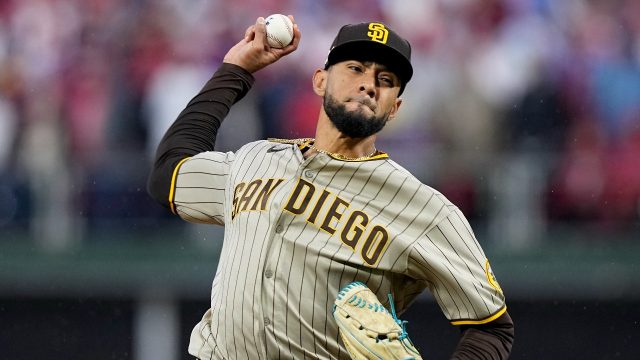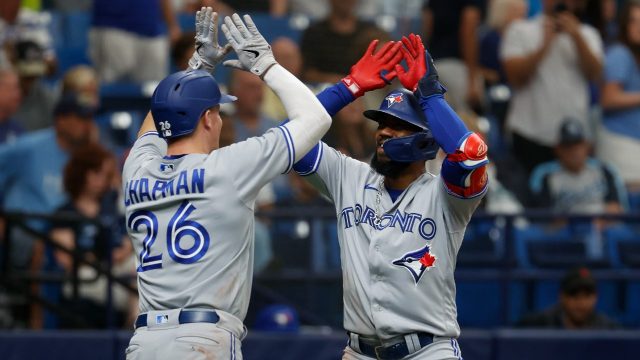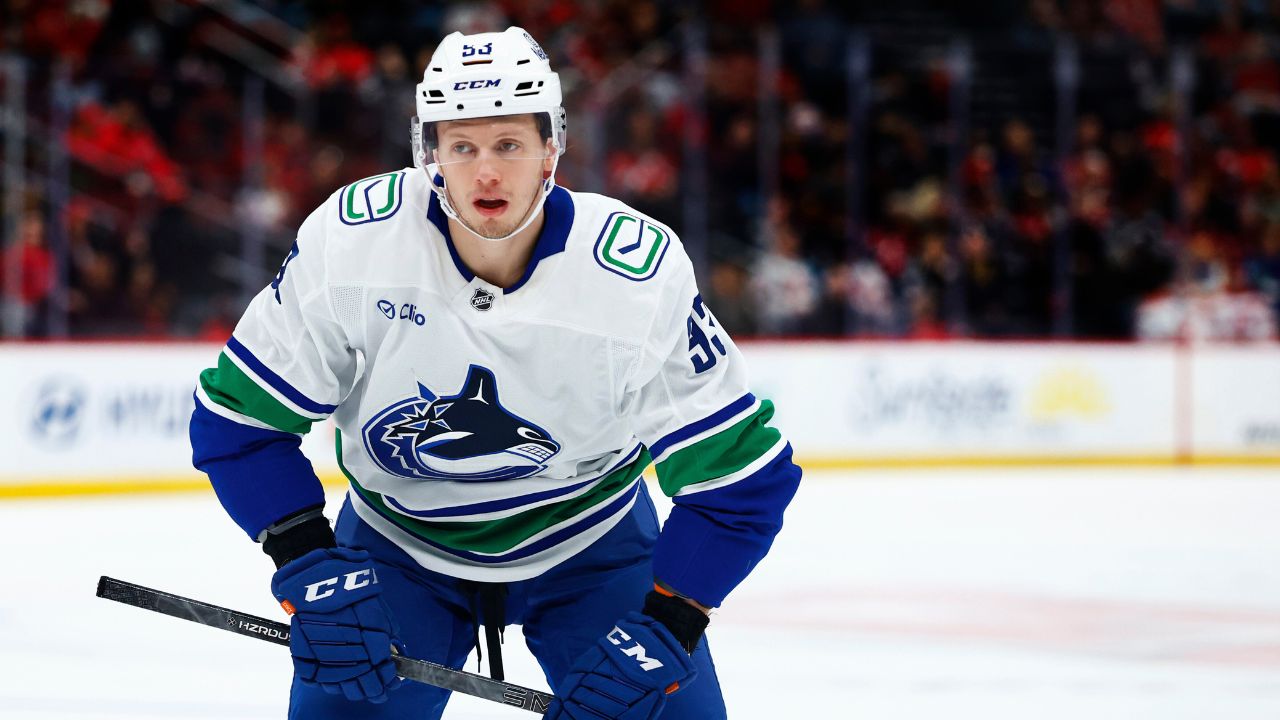
LAS VEGAS – At the end of the 2015 season, the Toronto Blue Jays faced an interesting decision with pending free agent Marco Estrada. The right-hander, 32 at the time, was coming off a breakout season in which he established career bests virtually across the board and was, understandably, seeking to leverage his newfound success on the open market.
That the Blue Jays wanted him back was without doubt, especially with multiple spots open in their rotation, but debate over whether his performance was an aberration or a new norm loomed large.
Ultimately, they extended him a qualifying offer, a one-year deal worth $15.8 million that winter, restricting his potential suitors on the open market and eventually leading to a $26-million, two-year contract.
A similar approach might have made sense for right-hander Ross Stripling, who was not extended a qualifying offer of $19.65 million for the 2023 season ahead of Thursday’s deadline and now enters free agency unencumbered.
There are some loose parallels between both Estrada and Stripling, who is also 32 and coming off a season of career bests across the dashboard, and the team’s situation then and now, although the calculus for the Blue Jays this time was obviously different.
A key difference is that back in the fall of 2015, the Blue Jays were comfortable with the possibility of Estrada accepting the qualifying offer, while with Stripling, they were obviously not.
That’s more a comment on price point than faith in the player, as on the open market a one-year deal for Stripling feels reasonable in the $14-million range, meaning there’d be a premium in the $5.65 million range in the qualifying offer, money that would go a long way toward signing, say, a reliever.
If the gap was narrower, perhaps the decision is different, and an important consideration is that Stripling’s agency isn’t reluctant to accept the qualifying offer, taking the strong number for one year and then bringing the player back to market untethered the next. It’s the same strategy Kevin Gausman and Marcus Stroman, both represented by a different agency, employed two off-seasons ago before getting big deals last winter.
Where that leaves Stripling and the Blue Jays is unclear, although there’s an obvious divergence in how they see his value right now. The long-time swingman excelled over 24 starts covering for the injured Hyun Jin Ryu, and with his ability to pitch effectively in multiple roles, he’s an ideal fit for deep contenders and teams-on-the-make alike.
Now, it’s possible the market helps bring the sides back together and there is legitimate mutual interest there, but as of 5 p.m. ET Thursday, all 30 teams are free to make offers for him, not just one.
“It’s been a great spot for me, definitely feeling that for sure and hoping to be back here,” Stripling said Oct. 8, after the Blue Jays were eliminated from the post-season. “Toronto the city, the Blue Jays organization, I love all of it – it’s been a great home for me. Excited to see what the off-season brings but right now, sad that my time in Toronto is up in the air.”
Up in the air for the Blue Jays, of course, is what the decision means for their rotation moving forward.
General manager Ross Atkins made clear during the GM Meetings this week that the club is seeking at least one starter to join Kevin Gausman, Alek Manoah and Jose Berrios in the rotation, along with a back-end leverage reliever. And it’s possible they add another starter, or some type of bulk-innings arm, to compete for a spot along with Yusei Kikuchi and Mitch White.
Their search encompasses all ends of the pitching market and while in theory they could do a short-term, high average-annual value deal akin to the one Max Scherzer got last winter – they took a hard run at Justin Verlander a year ago and will surely stay engaged this time around – this may turn out to be more of an eggs-put-in-multiple-baskets off-season.
As things stand, the Blue Jays are already pushing toward $200 million by simply returning the roster currently in place. And after handing out major deals to George Springer, Berrios and Gausman the past two winters, and with potential extensions for candidates like Vladimir Guerrero Jr., Bo Bichette, Matt Chapman and Alek Manoah on the horizon, they’ll want to retain some flexibility for winters to come.
All of that makes the reconnaissance work the Blue Jays did this week in Las Vegas essential and Atkins, speaking before the qualifying offer decision was finalized, said “we’ve learned a ton.”
“It felt like we’ve met with every potential representative of every potential fit and had dialogue from every potential fit with potential trade scenarios that we can see,” he continued. “If we didn’t meet face-to-face, then there were lengthy exchanges. The great thing about these meetings is there’s a consolidated attempt to learn as much as you possibly can that really does kick things off in a positive way.”
The trick, of course, is in making sure they finish that way, too, and the Blue Jays have a better idea about their options now that they’ve better sussed out their options in free agency and the trade market, where their catchers, outfielders and relievers have all come up.
Locking Stripling down out of the gate, the way they did with Estrada seven years ago, would have addressed a pivotal need early and allowed the Blue Jays to focus in other areas. Instead, they’re into the negotiating period with their needs clear and all options open.






